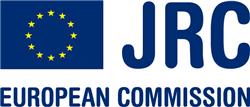Home > Press > JRC and EASAC sign agreement for closer cooperation - Joint report on safety aspects of nanomaterials published
 |
Abstract:
The Joint Research Centre (JRC) and the European Academies Science Advisory Council (EASAC) have signed an agreement towards closer cooperation, in the name of the common goal to support policy making through independent scientific research.
JRC and EASAC sign agreement for closer cooperation - Joint report on safety aspects of nanomaterials published
Europe | Posted on October 18th, 2011Dominique Ristori, Director-General of the JRC, said: "We see the increased cooperation between the JRC and EASAC as very promising, because it will serve the mutual interest of the European Union and its Member States in coordinating their science and technological development activities. Achieving consistency between European and national policies is a fundamental step in the path towards the European Union's 2020 targets."
Sir Brian Heap, President of the European Academies Science Advisory Council, said:
We are very pleased to be taking a step forward in the cooperation with the JRC. Today, EASAC already provides the European Commission with advice and expertise of outstanding scientists of the national science academies of Europe. A closer collaboration will mean that we will be able to address shared interests to ensure that science can inform policy-making, of which the report we are presenting today is a worthy example."
The two organizations also presented the result of their first strategic liaison: a report on the state-of-the-art knowledge on safety aspects of engineered nanomaterials. The report "Impact of engineered nanomaterials on health: considerations for benefit-risk assessment" was compiled by a group of 13 experts from both EASAC and JRC. The report coincides with today's adoption by the European Commission of a recommendation on a new common definition of nanomaterials, based on scientific advice from the Scientific Committee on Emerging and Newly Identified Health Risks (SCENIHR) and the JRC.
The report deals with a field - nanomaterials - which has the potential to play a major role in European innovation, economic growth and industrial competitiveness. The document highlights the need for a harmonised scientific and regulatory framework addressing potential health and environment impacts of nanomaterials. The authors acknowledge that the development of new generations of nanomaterials will require an even stronger interdisciplinary collaboration between scientists.
This joint initiative of EASAC and the JRC contributes to the collective Europe 2020 targets and supports integrated efforts for nanotechnology innovation, as well as public debate on the future of nanomaterials.
####
About European Commission, Joint Research Centre (JRC)
About the JRC
The Joint Research Centre (JRC) is the European Commission's in-house science service. Its mission is to provide customer-driven scientific and technical support for the conception, development, implementation and monitoring of European Union policies. The JRC serves the common interest of the Member States, while being independent of special interests, whether private or national.
About EASAC
EASAC, built on its network of national science academies in Europe, is a key actor in providing independent, expert, evidence-based advice about the scientific aspects of public policy to those who work or influence the European Union policy-making process.
About JRC-EASAC future collaboration
Following the signature of the agreement towards closer collaboration, the JRC and EASAC will meet regularly to identify and consider mutual interests, and select those that might be taken forward in joint projects. This collaborative work will proceed alongside the substantial ongoing programmes of JRC and EASAC that will continue to address the established priorities of the two independent organisations.
Contacts:
Elena González Verdesoto
+32.2.299 98 62
JRC Press Office
Francesca Micheletti,
EASAC
Christiane Diehl,
Copyright © AlphaGalileo
If you have a comment, please Contact us.Issuers of news releases, not 7th Wave, Inc. or Nanotechnology Now, are solely responsible for the accuracy of the content.
| Related News Press |
News and information
![]() Simulating magnetization in a Heisenberg quantum spin chain April 5th, 2024
Simulating magnetization in a Heisenberg quantum spin chain April 5th, 2024
![]() NRL charters Navy’s quantum inertial navigation path to reduce drift April 5th, 2024
NRL charters Navy’s quantum inertial navigation path to reduce drift April 5th, 2024
![]() Discovery points path to flash-like memory for storing qubits: Rice find could hasten development of nonvolatile quantum memory April 5th, 2024
Discovery points path to flash-like memory for storing qubits: Rice find could hasten development of nonvolatile quantum memory April 5th, 2024
Announcements
![]() NRL charters Navy’s quantum inertial navigation path to reduce drift April 5th, 2024
NRL charters Navy’s quantum inertial navigation path to reduce drift April 5th, 2024
![]() Discovery points path to flash-like memory for storing qubits: Rice find could hasten development of nonvolatile quantum memory April 5th, 2024
Discovery points path to flash-like memory for storing qubits: Rice find could hasten development of nonvolatile quantum memory April 5th, 2024
Safety-Nanoparticles/Risk management
![]() Tests find no free-standing nanotubes released from tire tread wear September 8th, 2023
Tests find no free-standing nanotubes released from tire tread wear September 8th, 2023
![]() Billions of nanoplastics released when microwaving baby food containers: Exposure to plastic particles kills up to 75% of cultured kidney cells July 21st, 2023
Billions of nanoplastics released when microwaving baby food containers: Exposure to plastic particles kills up to 75% of cultured kidney cells July 21st, 2023
Alliances/Trade associations/Partnerships/Distributorships
![]() Chicago Quantum Exchange welcomes six new partners highlighting quantum technology solutions, from Chicago and beyond September 23rd, 2022
Chicago Quantum Exchange welcomes six new partners highlighting quantum technology solutions, from Chicago and beyond September 23rd, 2022
![]() University of Illinois Chicago joins Brookhaven Lab's Quantum Center June 10th, 2022
University of Illinois Chicago joins Brookhaven Lab's Quantum Center June 10th, 2022
|
|
||
|
|
||
| The latest news from around the world, FREE | ||
|
|
||
|
|
||
| Premium Products | ||
|
|
||
|
Only the news you want to read!
Learn More |
||
|
|
||
|
Full-service, expert consulting
Learn More |
||
|
|
||








